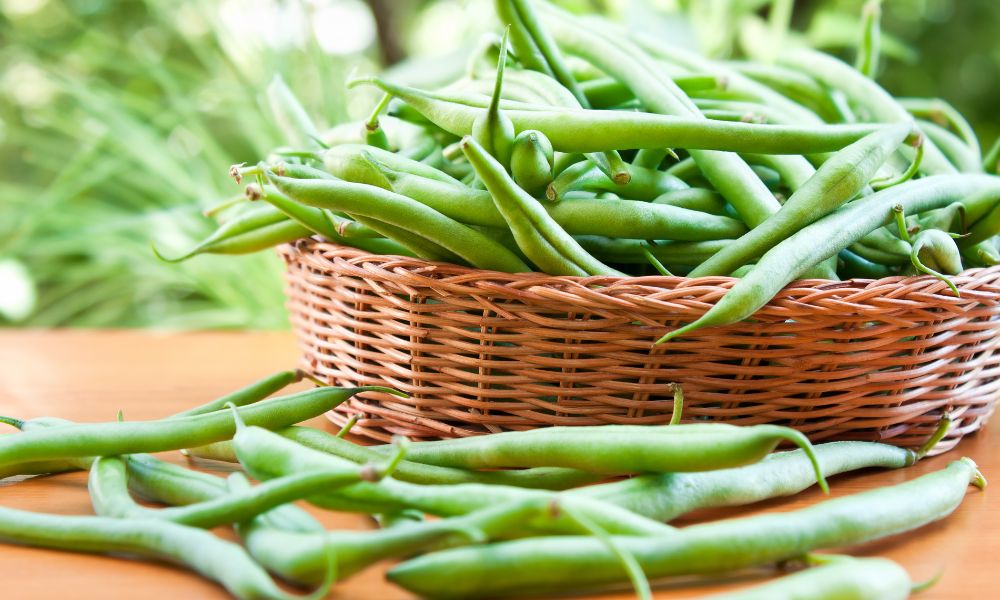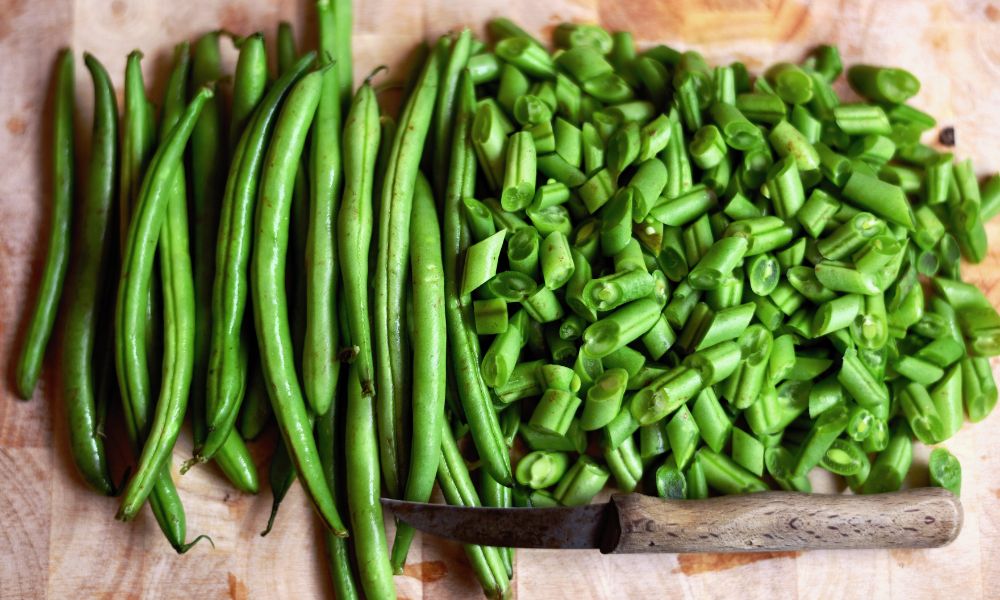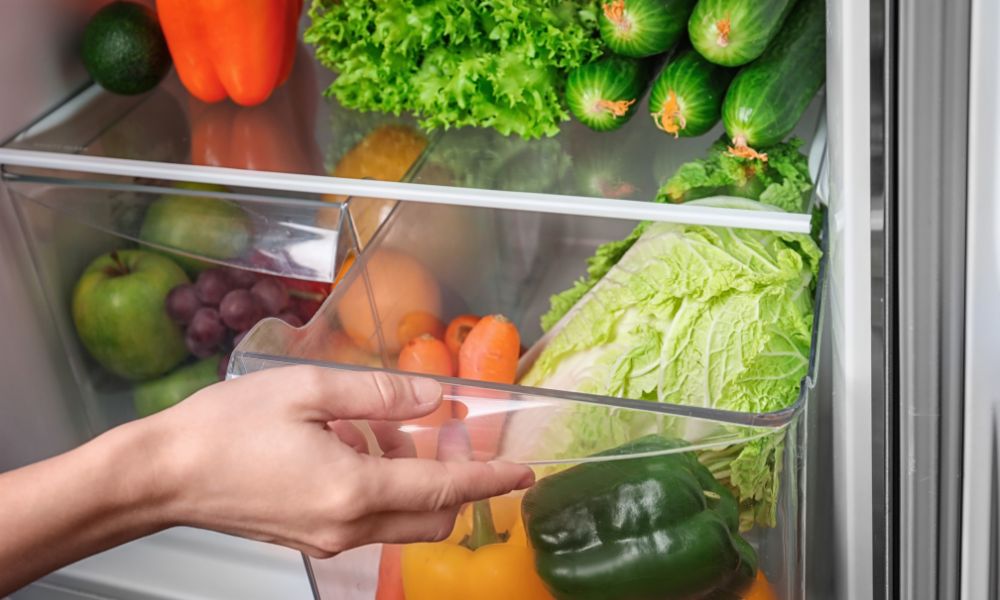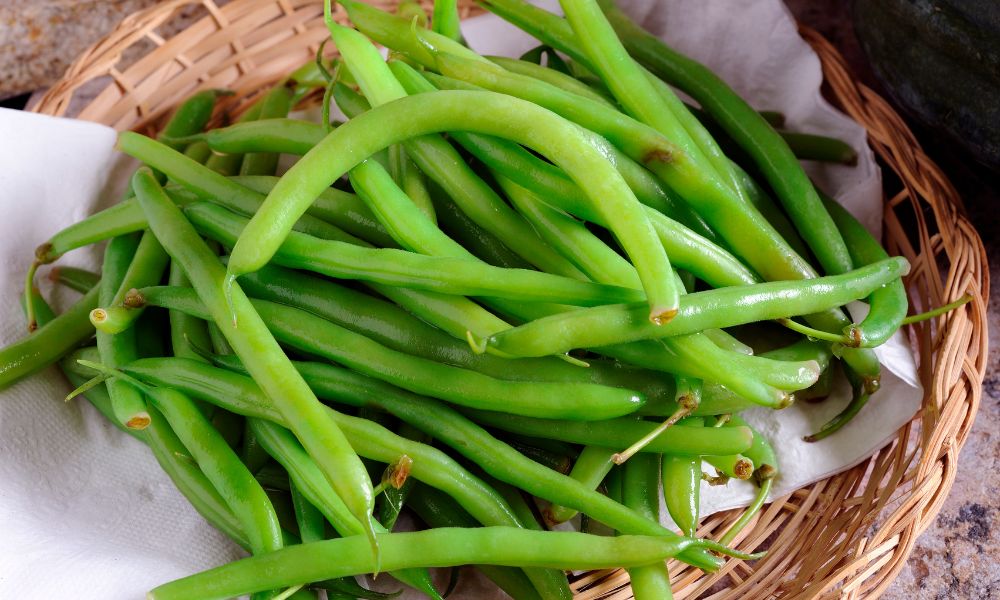Ah, green beans! These crunchy and versatile little legumes are an amazing addition to your meals, and they’re not just for Thanksgiving! But what if you’re a kitchen newbie just venturing into the exciting realm of cooking green beans? Or perhaps you’ve got a massive harvest from your garden, and need some savvy tips for freezing green beans? Fret not, for that’s where this guide comes into play! Get ready to embark on a culinary adventure as we dive into selecting, preparing, cooking, and freezing green beans for both delicious meals and long-term storage.

Benefits of Green Beans
You may have fond childhood memories of snacking on green beans, but did you know their nutritional benefits are worth writing home about? High in fiber, vitamins (A, C, K), and minerals (iron, magnesium), green beans provide a host of health advantages.
The true magic of green beans lies not only in their nutritious profile but also in their culinary versatility. Sautéed, steamed, or thrown into a flavorful stir-fry, green beans bring both texture and a pop of color to your dining table!
Selecting and Preparing Green Beans
Selecting the Perfect Green Bean
When it comes to cooking green beans, quality makes all the difference. Here’s what to look for when grocery shopping or harvesting from your garden:
- Bright green color with no blemishes or discoloration
- Firm beans that snap when broken
- Smaller beans, as they tend to be more tender
Cleaning and Prepping Your Green Beans
Ready for some hands-on action in the kitchen? First, we must prepare those glorious beans for their culinary debut. Follow these simple steps:
- Rinse your green beans under cold water to remove any dirt.
- Shake off excess water and spread the beans on a clean kitchen towel to air dry.
- Line the beans up and trim off the stem ends with a sharp knife or kitchen scissors.
- If desired, slice the green beans into bite-sized pieces.
Cooking Methods for Green Beans
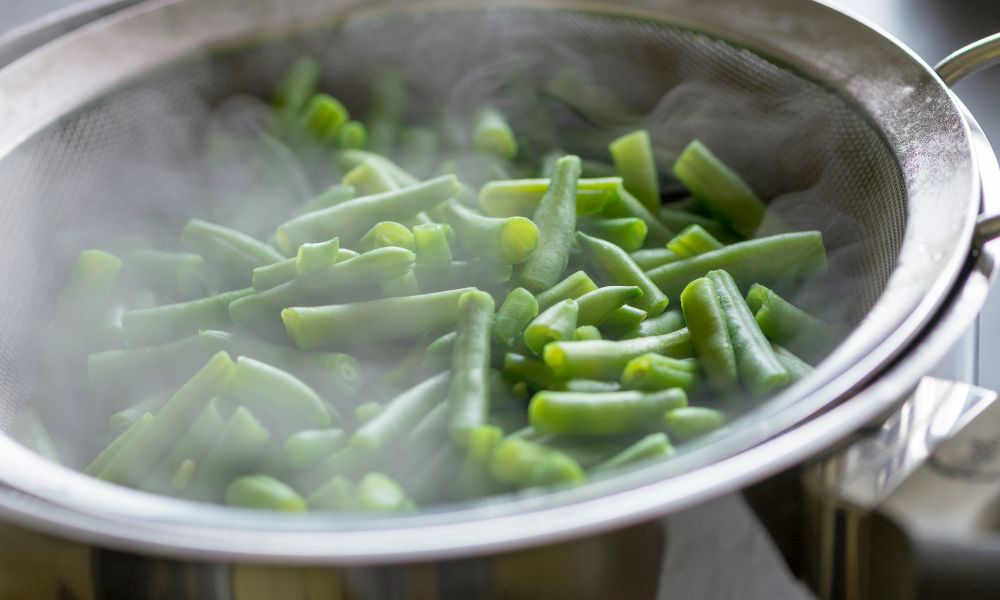
Boiling Green Beans
Boiling is a classic and foolproof method of cooking green beans. Start by:
- Bringing a large pot of salted water to a boil.
- Adding the green beans and boiling for 3-5 minutes, depending on your desired level of tenderness.
- Draining the beans and transferring them to a bowl of ice water. This is called shocking, which stops the cooking process, preserving their vibrant color and pleasant crunch.
- Once cool, drain the beans well, and season according to your liking.
Steaming Green Beans
Want to maintain more of those oh-so-important nutrients? Opt for steaming your beans instead of boiling:
- Fill a pot with about an inch of water and place a steam basket above the water.
- Bring the water to simmering and add the green beans to the basket, covering the pot with a lid.
- Steam for 4-6 minutes, until they reach your preferred tenderness.
- Remove the beans from the pot and season them to taste.
Tip: No steam basket? No problem! Bundle your green beans in aluminum foil, poke a few holes for steam to escape, and steam in a covered pan for 15 minutes – easy peasy!
Sautéing Green Beans
Now let’s pump up the flavor with some sautéing action! This cooking technique offers browned, tender-crisp deliciousness. Simply:
- Heat a skillet over medium-high heat with a bit of oil or butter.
- Add the green beans, stirring occasionally, and cook for 8-10 minutes.
- Hit those beans with a dash of salt and pepper, or your choice of spices or herbs *(Pro tip: garlic and butter make an *unbeatable* combo!)
Freezing Green Beans

The Art of Blanching
Hold up! Before stuffing your freezer with green beans, we must attend to the crucial step of blanching. Blanching green beans before freezing not only retains their vibrant color, but enhances the flavor, texture, and nutritional quality during long-term storage. To blanch like a pro, here’s what you do:
- Bring a large pot of water to a rolling boil.
- Prepare a large bowl filled with ice water and place it near the stove.
- Add your cleaned and prepped green beans to the boiling water and cook for 3 minutes.
- Immediately transfer the beans to the ice water to cool for another 3 minutes. It’s science in action – the cold water halts the cooking process!
- Drain the beans well.
A Cool Breeze: Storing Your Blanched Green Beans
With your greens blanched and drained, it’s finally time to tuck them away in storage. To ensure long-term freshness and flavor, follow these packaging and storage guidelines:
- Dry the green beans thoroughly with a clean kitchen towel or paper towel.
- Lay your green beans on a baking sheet in a single layer, and flash-freeze them for 2 hours. This step helps prevent the beans from clumping together in the freezer.
- Transfer your frozen beans to a freezer-safe bag or container, squeezing out as much air as possible.
- Label your container with the date, and happily store those beans in your freezer for 8-12 months!
Delicious Recipes with Green Beans
Craving some kitchen experimentation with those gorgeous green beans? We’ve got an amazing mix of flavor-packed recipes for you to try! From refreshing salads to hearty casseroles, let’s put those green beans front and center.
Zesty Green Bean Salad
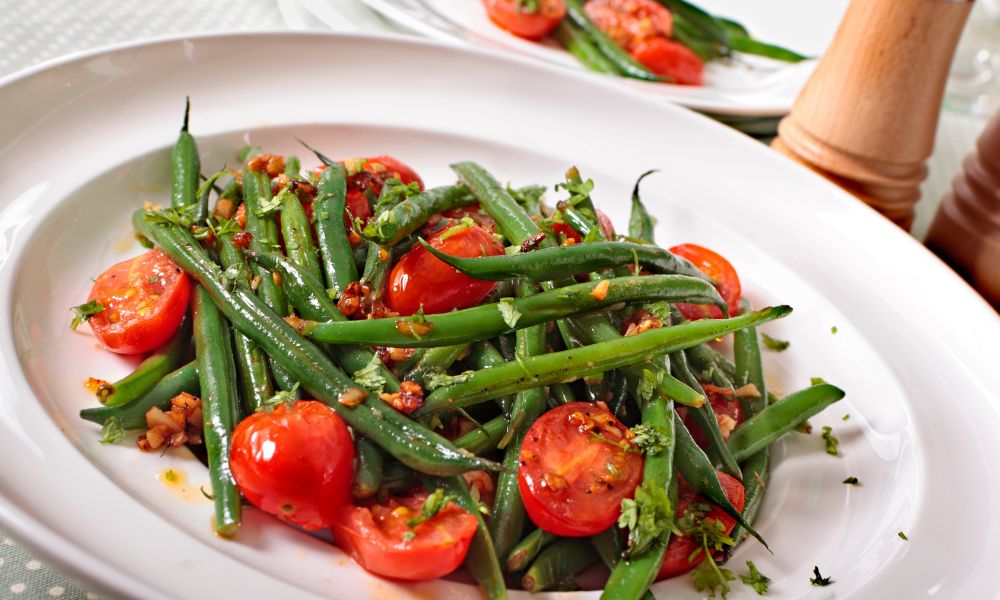
Kick off your taste buds with a light and tasty green bean salad that’s perfect for a summer day:
- Toss your boiled or steamed green beans with a lively dressing made from lemon juice, olive oil, Dijon mustard, crushed garlic, salt, and pepper.
- Add halved cherry tomatoes, thinly sliced red onion, and crumbled feta cheese for extra flavor and color.
- Allow this vibrant medley to chill in the fridge for at least 30 minutes, letting all the flavors mingle and deepen.
Green Bean Casserole: A Classic Done Right

Bring back those holiday vibes with a delectable green bean casserole – comfort food at its finest:
- Combine cooked green beans with creamy mushroom soup, and a generous splash of milk or cream in a casserole dish.
- Mix in some cooked bacon or ham if you desire a meatier touch.
- Top with a layer of crispy fried onions and grated cheese, then pop it into a preheated oven (350°F) for about 20-25 minutes, until golden and bubbly.
Asian-Inspired Green Bean Stir-Fry

Ready for a taste journey to the East? Crank up the heat with this scrumptious, Asian-inspired green bean stir-fry:
- Heat oil in a wok or large skillet, and toss in some minced garlic, ginger, and chilies for a fiery kick.
- Add your trimmed green beans to the party and stir-fry for 5-7 minutes, until tender-crisp.
- Mix in a sauce made from soy sauce, hoisin sauce, oyster sauce, and a bit of sugar. Cook for another minute, and your flavorsome dish is ready!
- Optional: Garnish with some chopped green onions and toasted sesame seeds for that finishing touch.
FAQs
Let’s get down to business and tackle some common inquiries about cooking and freezing green beans.
- Can I freeze green beans without blanching? While it is possible, skipping the blanching process may result in a lesser quality of texture, color, and flavor in your frozen green beans. Trust us, it’s worth the few extra minutes of prep!
- How long can I store frozen green beans? Properly blanched and well-packaged green beans can be stored in the freezer for up to 12 months. After this time, the beans may still be safe to eat but might lose some of their flavor and texture.
- Can I use frozen green beans directly in recipes? Absolutely! Many recipes call for the inclusion of frozen green beans without the need to defrost them first. Stir-fries, soups, and casseroles are all great options for incorporating your stashed-away legumes.
Conclusion
So there you have it – a world of possibilities brimming with the goodness of cooking and freezing green beans. Whether you’re planning a fancy dinner or organizing some meal prep, these lovely legumes have got your back. So have fun exploring different cooking methods, trying out scrumptious recipes, and most importantly, savoring the taste of your very own home-cooked green beans. Bon appétit!
References:
